For my next Lockdown Nature Walk, I wandered about a community garden and a car park in the centre of Totnes looking at how spring was progressing in these semi-urban settings. I made my observations over the weekend of February 27/28 during the short spell of warmer weather we enjoyed towards the end that month. I have included a poem by Wordsworth “The lesser celandine” at the end of the account followed by some photos of the species I saw.
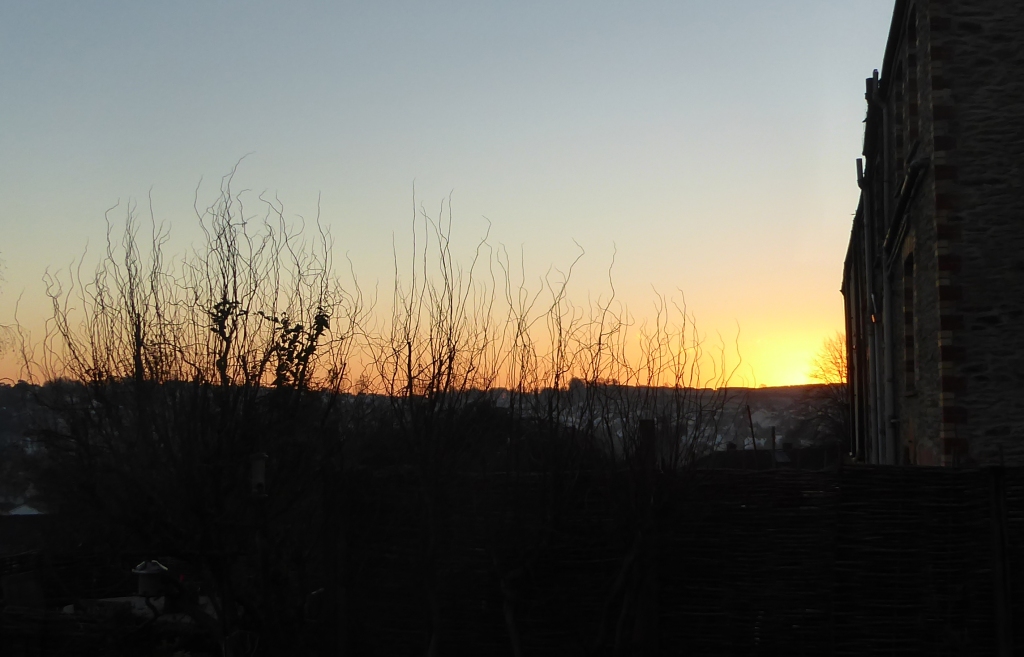
After weeks of oppressive weather, grey, wet and then quite cold, these few days of sunshine and spring-like warmth were very welcome. I felt my spirits lift and I acquired a renewed sense of purpose despite the constraints of lockdown. Several of the days dawned to cloudless skies accompanied by fuzzy white blankets of frost. On one of these mornings, I went out early to watch the dawn light. With sunrise still more than half an hour away and the sky an intense dark blue, a bright apricot glow rose behind the eastern hills. The dawn chorus echoed across the valley and it was tempting to think that the birds were singing of the impending arrival of spring.
The absence of cloud allowed me to watch the sun as it rose above the eastern hills and I began to see how this event in itself held indications of seasonal change. Not only was the Late February sunrise more than an hour earlier compared to the beginning of the year, but the sun now rose closer to the east compared with roughly south east in early January. The sun will continue its eastern trajectory, rising directly from the east on March 20th, the vernal or spring equinox, the astronomical start of spring.
With these ideas of seasonal change in mind, I decided to take advantage of the short spell of warmer weather to visit some of the town centre gardens and car parks to look for signs of spring. First stop was the Leechwell Garden, one of the community gardens in the centre of Totnes. By the time I reached this town centre oasis, warm sunshine had dismissed the early morning frost and a peal of children’s voices rang out from the play area and sand pit. The early flowers, the snowdrops and winter aconites, were already past their best but nearby I came across the first blackthorn blossom. The porcelain-white flowers were not fully open but their red-tipped stamens were already on show. Blackthorn is very popular with early solitary bees and that day I made my first sighting of the year. A dandelion was the host and a small bee with a bright orange-brown thorax and yellow pollen hairs was feeding. This was a female Gwynne’s Mining Bee (Andrena bicolor). A few lesser celandines were showing around the Garden but it was a nearby car park that surprised with its impressive display of these flowers.
The Nursery Car Park is enclosed by old stone walls and the parking area is lined by wide soil borders mostly covered in rough grass. In the past, I have seen solitary bees nesting in the grassy borders and butterflies taking advantage of the flowers growing there. During the winter, the local council decided to cut the vegetation on the soil borders and did so very harshly. This is probably bad news for overwintering butterflies but the early flowers seem to have responded well, perhaps owing to lack of competition from grasses. The long border along the north side is sheltered by a tall ivy-clad stone wall and when the sun shines this is a warm sheltered spot. A few lesser celandines (Ficaria verna) had been struggling into flower here earlier in February but the warm weather triggered an outpouring of these starry golden flowers as if the area had been spattered with yellow gloss paint.
I stood there for a while, looking, listening; one of the few benefits of lockdown is that the car park is very quiet. Blackbirds squabbled noisily over ivy berries, a wren trilled, heard but unseen, and a large bumblebee tracked across the border. I admired the celandine flowers with their shiny two-tone petals, mostly lemon yellow but with a darker slightly brown section near the centre of the flower. Also, their central fuzz of bright, buttery yellow, pollen-loaded stamens surrounding a nascent green seed pod.
There is something about these golden flowers on a bright sunny day with their petals held horizontally that speaks of their close relationship with the sun. Part of this is the sensitivity of the flowers to light levels. On dull days when cloud obscures the sun, the flowers will close and even on sunny days, they do not open until about 9am and are closed again by 5pm. Then there are the stamens, thickly coated with yellow pollen. With its colour and its richness, for me this pollen symbolises the energy of the sun. And of course, it does contain some of the sun’s energy but it acquires this indirectly via the shiny heart-shaped green leaves that form thick mats across the border. Photosynthesis in the leaves captures the energy of sunlight transforming it and generating among other substances, pollen and nectar, energy for insects. It is perhaps no accident that the Celtic name for the lesser celandine is grian, the sun.
The first insect I saw taking advantage of this floral energy store during the warm spell was a honeybee. It moved from flower to flower, its pollen baskets accumulating sticky yellow lumps of pollen to take back to the hive as food. Several hoverflies also appeared on the flowers. Mostly these were Common Drone Flies (Eristalis tenax) a species that overwinters as an adult and comes out on warm winter days to top up with pollen and nectar. They bear more than a passing resemblance to male honeybees as their name suggests. Most of the Eristalis I saw were females, characterised by eyes separated at the top of their head. Several Bumblebees also fed from the flowers but these were very jumpy and I manged only one photo.
In the past, the lesser celandine was referred to as the “spring messenger” being one of the first woodland flowers to show each year. Gilbert White noted that in 18th century Hampshire the flowers first appeared on average on February 21st. This year in Devon, based on my observations, they emerged several weeks earlier. The lesser celandine is also one of the first flowers to appear during weather warm enough to tempt out many insects. It will continue flowering into April providing support for many species including the solitary bees that emerge as spring unfolds.
………………………………………….
The golden flowers have Inspired poets including William Wordsworth. The lesser celandine was his favourite flower and he wrote three poems about them. Here is his poem entitled “The lesser celandine”
There is a Flower, the Lesser Celandine,
That shrinks, like many more, from cold and rain;
And, the first moment that the sun may shine,
Bright as the sun himself, ’tis out again!
When hailstones have been falling, swarm on swarm,
Or blasts the green field and the trees distressed,
Oft have I seen it muffled up from harm,
In close self-shelter, like a Thing at rest.
But lately, one rough day, this Flower I passed,
And recognized it, though an altered form,
Now standing forth an offering to the blast,
And buffeted at will by rain and storm.
I stopped, and said, with inly-muttered voice,
“It doth not love the shower, nor seek the cold:
This neither is its courage nor its choice,
But its necessity in being old.
“The sunshine may not cheer it, nor the dew;
It cannot help itself in its decay;
Stiff in its members, withered, changed of hue.”
And, in my spleen, I smiled that it was grey.
To be a Prodigal’s Favourite – then, worse truth,
A Miser’s Pensioner – behold our lot!
O Man, that from thy fair and shining youth
Age might but take the things Youth needed not!

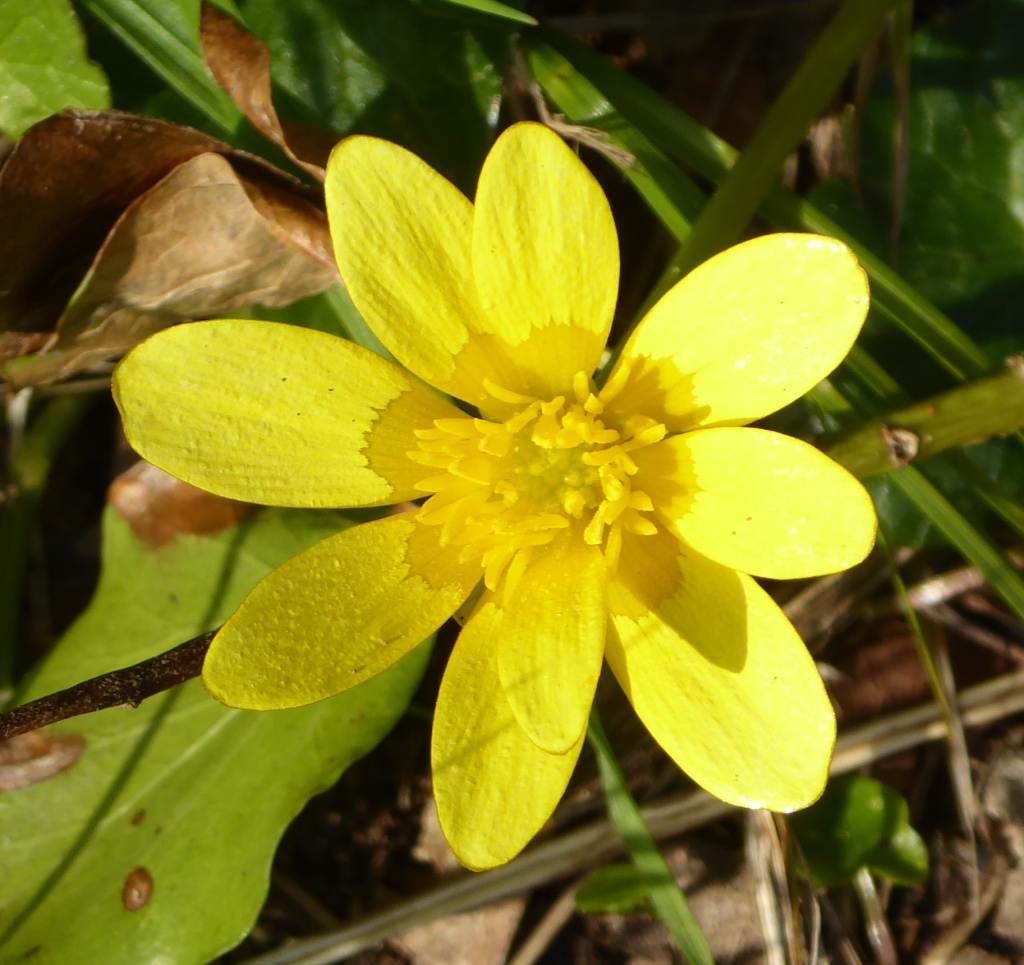
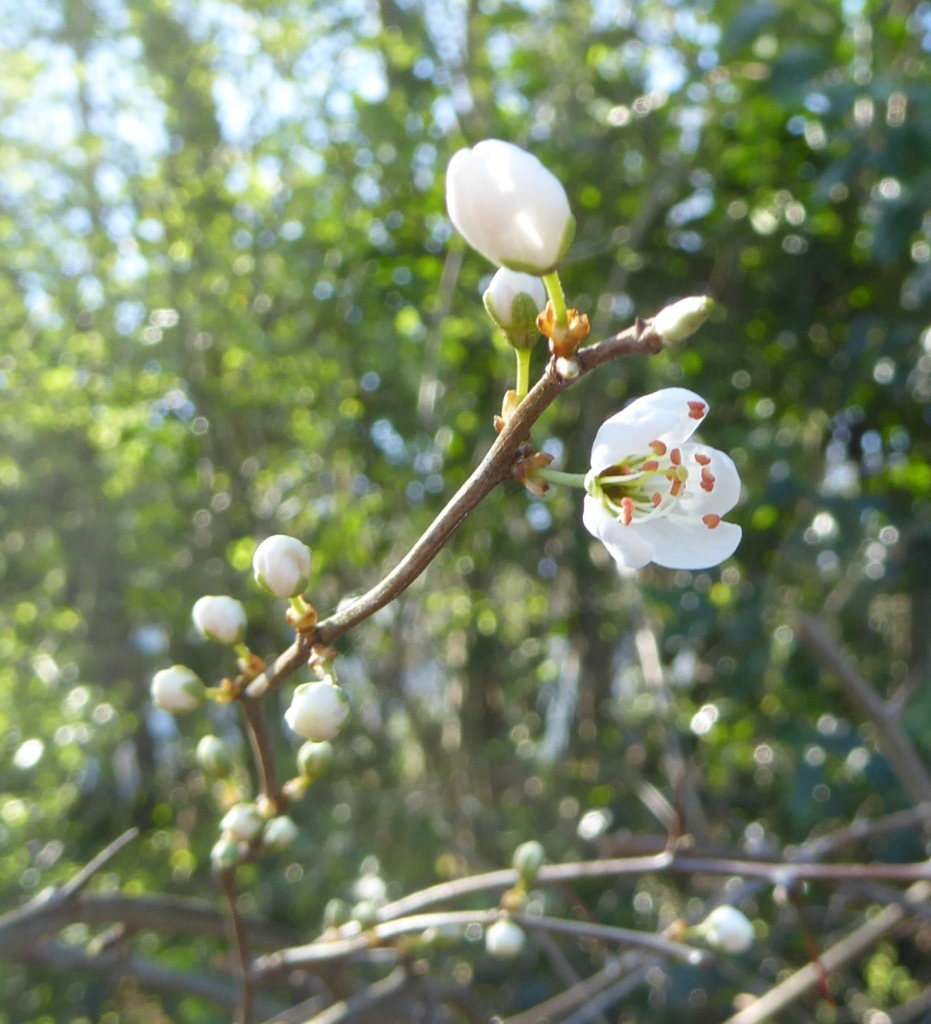
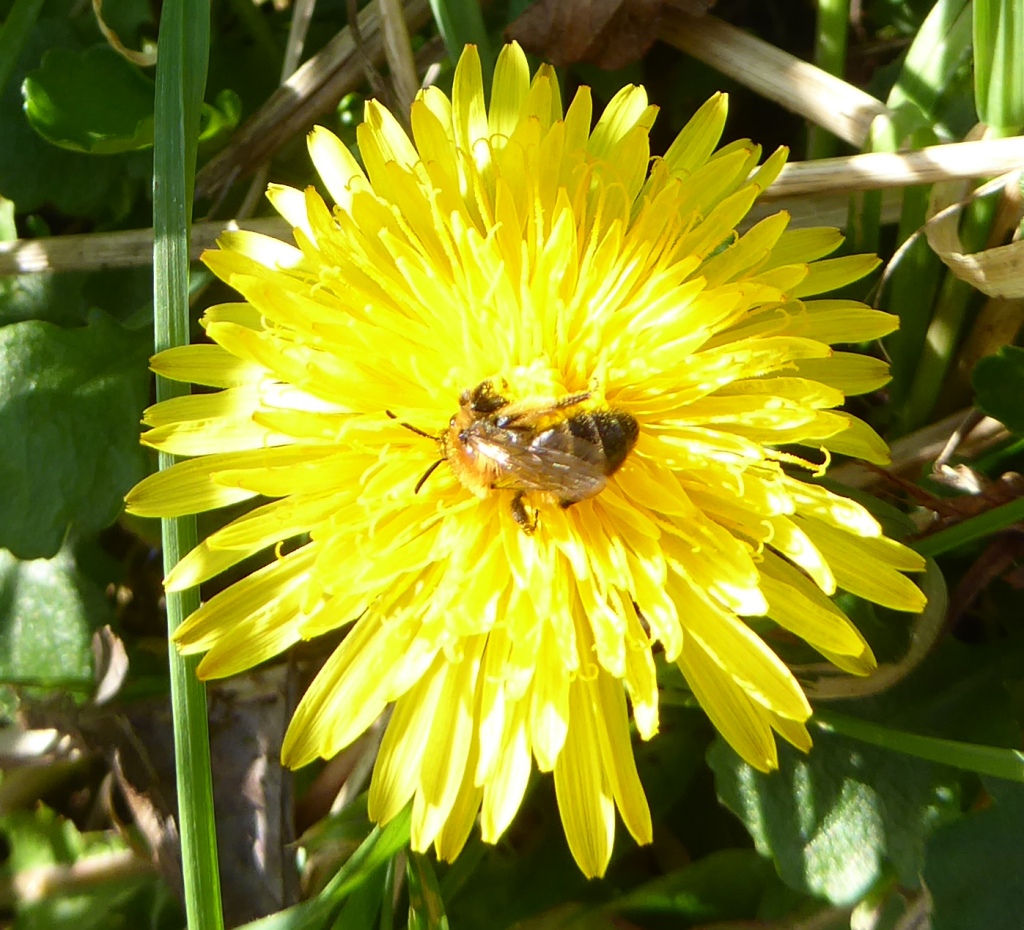
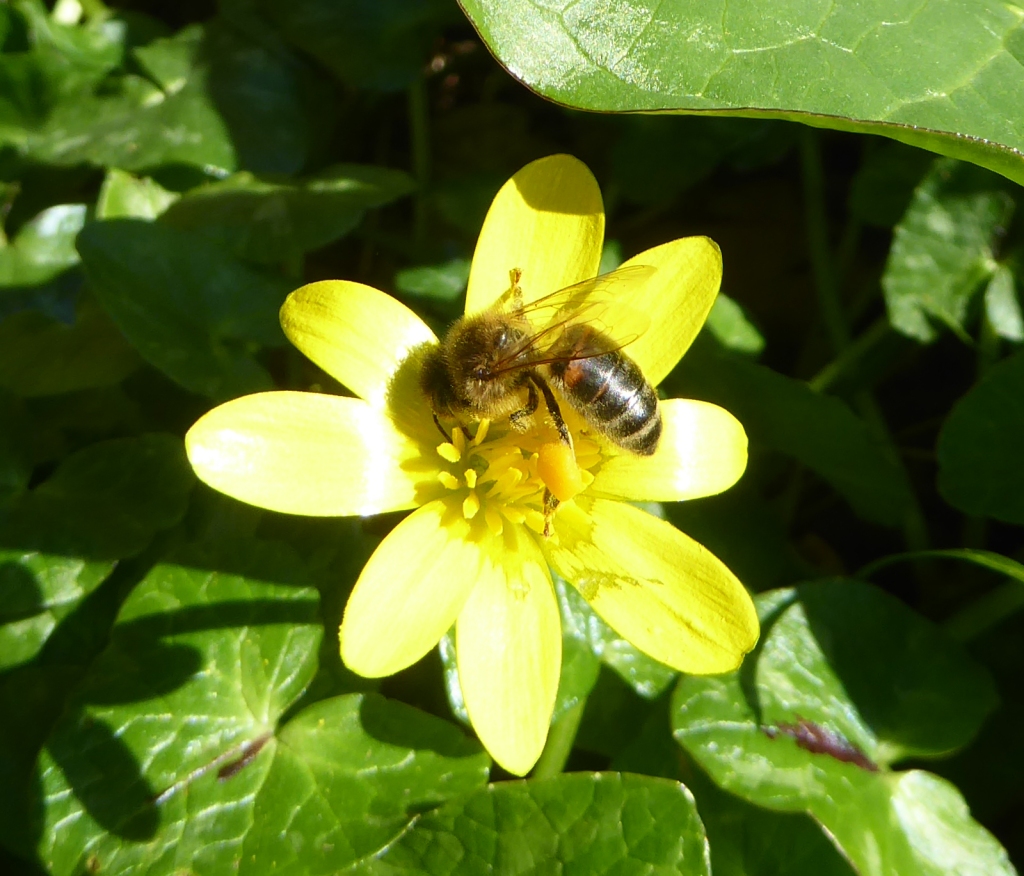



Thank you for another beautiful post. I also like to take a moment to listen to the gentle noises of nature.
LikeLike
Thanks Emily. It’s surprising what you hear when you stop to listen. Over the past two days we have been fascinated to hear a “laughing” sound from the nearby gardens and trees. I think it is a green woodpecker but so far I have been unable to spot it!
LikeLike
Thank you for a wonderful read, Philip, and the chance to learn about other bees that I have never seen before. If I wait patiently some of these flowers you have seen will be blooming up here too.
LikeLike
Thanks Ann, I am glad you liked the post. Some of the species I mentioned are found where you are so it’s worth being patient.
LikeLike
Lovely post. We have a lot of lesser celandine this year, I think they liked all the rain we have had. I hardly ever see a bee on them only the drone flies. Amelia
LikeLike
Thanks Amelia. It seems to be a good year for lesser celandine and here the bumblebees and some solitary bees like them a lot.
LikeLike
Thank you for sharing another beautiful walk with us, Philip. Beautiful first signs of spring! Your photos are lovely and I think no matter where we are in the world we do celebrate the spring’s first arrival. I have also noted the absence of cars along some of my favorite hiking areas and have enjoyed the quiet. We’ll enjoy it as long as it lasts, anyway!
LikeLike